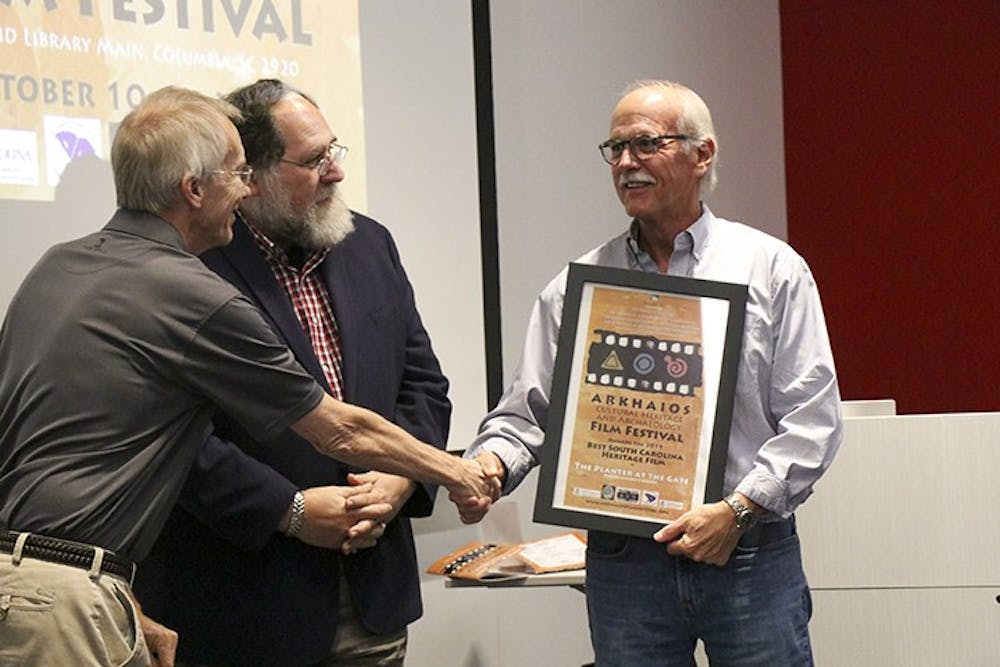The seventh annual Arkhaios Film Festival gave guests the opportunity to explore multiple cultural and historical topics through different documentaries.
Arkhaios is a cultural heritage and archaeology film festival, which means the films shown were all documentaries focusing on anthropology and archaeology.
Joanna Casey, an anthropology professor at University of South Carolina and Arkhaios volunteer, said films such as the ones in Arkhaios show the viewer the enormous accomplishments that people of the past were able to make.
"It sort of makes you feel a lot better about human capability," Casey said.
There were 14 films total covering many different cultures and topics. For example, the protection and restoration of Italian art damaged in earthquakes in "Artquake" by Andrea Calderone, or a Neanderthal encampment that turned out to be the oldest human construction ever discovered underground in France, as in "Neanderthal, the Mystery of the Burniquel Cave" by Luc-Henri Fage.
Since they're documentaries, one might expect cinematography to take a back seat to the facts. However, some of the films portrayed their subject matter as a well-crafted story.
Arkhaios was founded and directed by Jean Guilleux, an avocational archaeologist. Guilleux had the idea to create the festival after attending an archaeological film festival in France.
"That's how you spread the information in a manner that would attract the attention of the people," Guilleux said, referring to film.
Arkhaios is one of two archaeological film festivals in the U.S. The other is in Eugene, Oregon.
The four-day festival concluded on Sunday with an awards ceremony where the Arkhaios jury announced the winners of multiple awards.
The grand prize of Arkhaios was awarded to the film "Eating Up Easter," which is about the natives of Easter Island and the devastating effects of tourism on the island. The film also won audience favorite.
Best archaeology film was awarded to "Neanderthal, the Mystery of the Burniquel Cave" and best cultural heritage film was awarded to both "Becoming Singapore" by Tom St. John Gray and "Versailles Rediscovered, the Sun King's Vanished Palace" by Marc Jampolsky.
"Becoming Singapore" follows Eunice Olsen as she investigates both the history of Singapore and her family's history within the country. "Versailles Rediscovered" recreated what Versailles was like during the reign of King Louis XIV using 3D imagery.
The jury consisted of five members: two filmmakers, a journalist, an anthropologist and an archaeologist. This year, the jury president was Steven Folks, an executive producer and content manager in the content division of South Carolina ETV.
Folks said the quality of the films is equal to what one would expect from the Sundance Film Festival. However, Folks did note the low attendance of last year's festival was very disappointing.
"There wasn't the turnout these films really deserved," he said. "People are missing out if they don't come to see some of these films."
Low turnout was a factor again this year as well. The audience was almost exclusively filled with people who were directly involved with Arkhaios.
The films show the value of understanding heritage when history is limited, Casey said.
"Almost all of these films ... are people talking about reclaiming their heritage, not necessarily they want to go back to an older way of life, but understanding the many things that happened in the past," Casey said.

